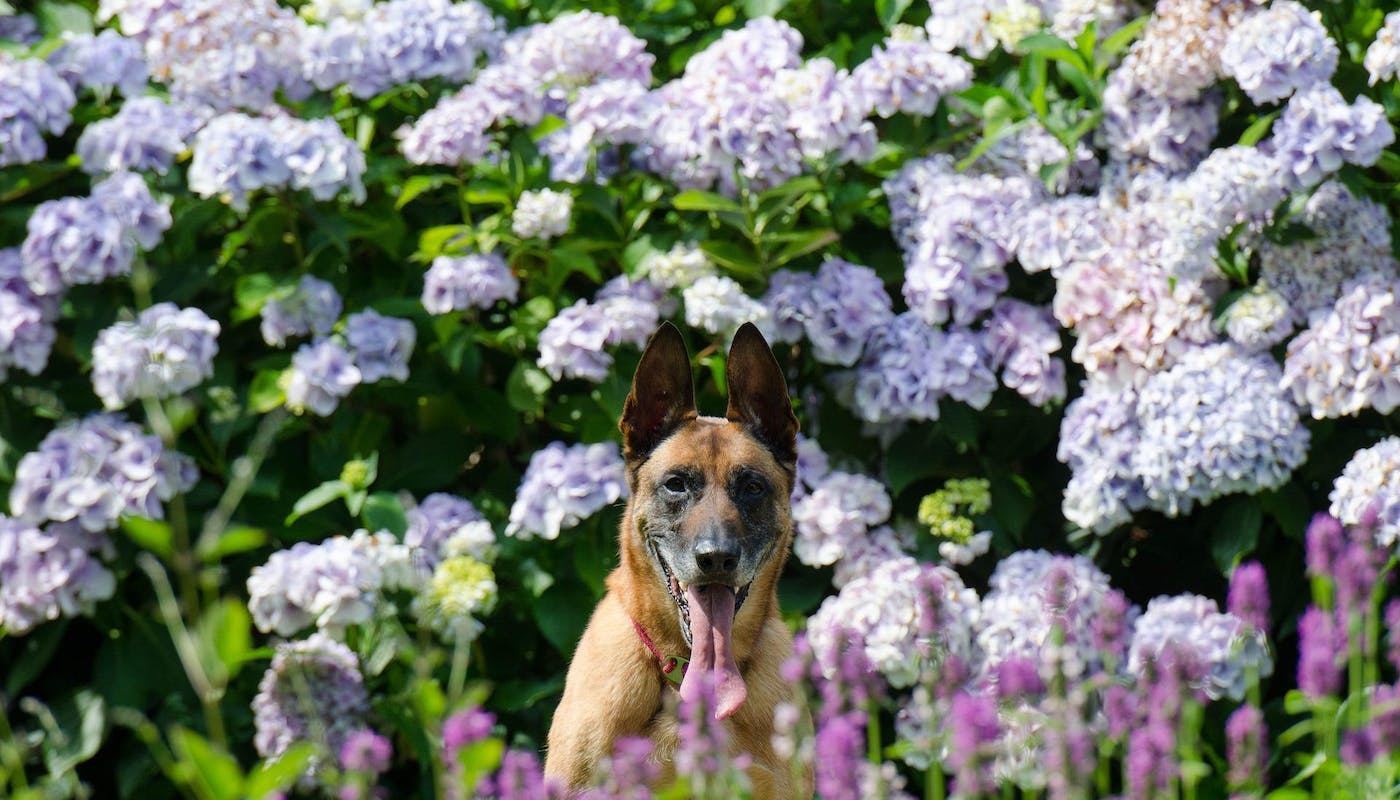Are Hydrangeas Poisonous To Dogs?
While gardening is a popular hobby, enjoyed by millions, when you enter a beloved family dog into the mix, it’s like you’re gardening on an expert level. Sure, there are plenty of lucky owners (or those who have put years of hard work into their garden and dog) who can spend hours tending to flowers, perfecting their lawn and growing delicious fruit and vegetables as their dog lays calmly by their side supervising. But for those at the start of their gardening journey, you’re going to need to put some serious work into forging a harmonious relationship between your dog and your garden.
- Freshly planted flowers are not ‘toys’ to be immediately dug back up
- Fruit and veg is being grown for the family to enjoy, not the dog
- Compost and fresh soil is not an invitation to go digging
These are all lessons your pet is going to have to learn but there’s plenty for you to learn too. Whether your garden is bursting with life or your dog only comes across plants while you’re
out on walks, all owners should be aware of the potential risks that some flora – like hydrangeas – presents to dogs.
Here, we will look at how hydrangeas are poisonous to dogs, what to do if you think your dog has hydrangea poisoning, and how it can be treated.
What Are Hydrangeas?
Hydrangeas are large flowers with broad leaves that often grow in a rounded formation. They usually come in blue, red, purple, pink, or white and are eye-catchingly beautiful. They often grow in gardens and hedgerows, and though they are toxic to both dogs and cats, you don’t need to get the garden shears out just yet.
With the right knowledge, dogs and hydrangeas can live harmoniously in the same garden.
Why Are Hydrangeas Poisonous To Dogs?
The leaves, flowers and buds of hydrangea plants contain amygdalin, a chemical known as a cyanogenic glycoside which produces cyanide when metabolized in the body. For this reason, hydrangeas are also technically toxic to humans as well. But since we’re less likely to try to ingest them, the risk of hydrangea poisoning in humans is low.
The good news is, it’s also fairly low risk for dogs too. For symptoms of hydrangea poisoning to occur, a large amount of the plant has to be consumed, and as the level of poisoning is dependent on the dosage it’s likely that any dogs that do metabolize amygdalin from hydrangeas would only show very mild symptoms.
However, it’s still useful for dog owners to know that the highest concentrations of amygdalin can be found in young leaves and flowers of the hydrangea. And since smaller pets need to consume less amygdalin to develop cyanide poisoning from hydrangeas, owners of little dogs should be extra aware.
How Do I Know If My Dog Is Suffering From Hydrangea Poisoning?
Fortunately, it’s highly unlikely for hydrangea poisoning to result in death for dogs. Since the poisoning is a result of ingestion, the most common symptoms are related to the digestive system and include:
- Vomiting
- Diarrhea
- Tiredness and lethargy
- Depression and confusion, in serious cases
What Do I Do If My Dog Eats A Hydrangea?
If you know (or think) your dog has ingested hydrangea, you will notice symptoms within around 30 minutes. The chances are they won’t have eaten enough of the plant to fall ill. But if they do, take them to the vet immediately, and take some of the plant with you.
Your vet will usually want to identify the plant that caused the poisoning, and rule out any other – more serious – causes for the symptoms. This is because vomiting and diarrhea are signs of other issues that may be unrelated to, or brought on by, the poisoning. This will most likely include urine and blood tests and possibly X-rays.
How To Treat Hydrangea Poisoning In Dogs
If your dog is found to have hydrangea poisoning, the treatment recommended will depend on how much they ate and the severity of their symptoms. The sooner they receive medical attention, the easier the symptoms will be to treat – and if you’re able to identify the issue within 30 minutes of ingestion it’s likely that a vet will advise you to allow the vomiting and diarrhea to pass through their system before taking any further action.
If your dog has ingested enough hydrangea to cause severe symptoms, they might be put on an intravenous drip to flush out the poison, rehydrate them after vomiting or diarrhea, and keep them under supervision for monitoring reasons.
Once home, your dog might also need medication and an altered diet to help them recover from the effects of their gastrointestinal symptoms.
Dog-Safe Plants To Pick Instead Of Hydrangeas
The good news for plant- and pet-lovers is that you don’t have to choose just one to bring joy to your home and garden. Hydrangeas can easily be kept out of the reach of curious dogs, and owners should be careful to collect any dropped leaves and flowers to avoid accidental ingestion.
But for cautious owners who prefer to avoid the risk altogether, there are plenty of pet-safe plants out there to choose from, that don’t come with the toxic side effects for your dog. They include:
- African violets
- Asters
- Bamboo
- Black haw
- Burro’s tail
- Calendulas
- Camellias
- Cornflowers
- Elaeagnus
- Ferns
- Marigolds
- Pansy orchids
- Petunias
- Roses
- Sage
- Snapdragons
- Sunflowers
- Tiger orchids
- Zinnias
